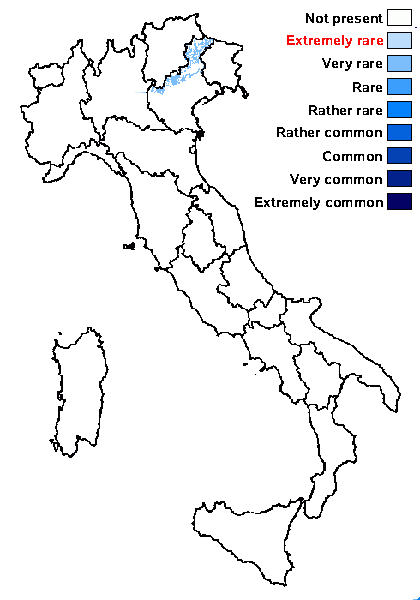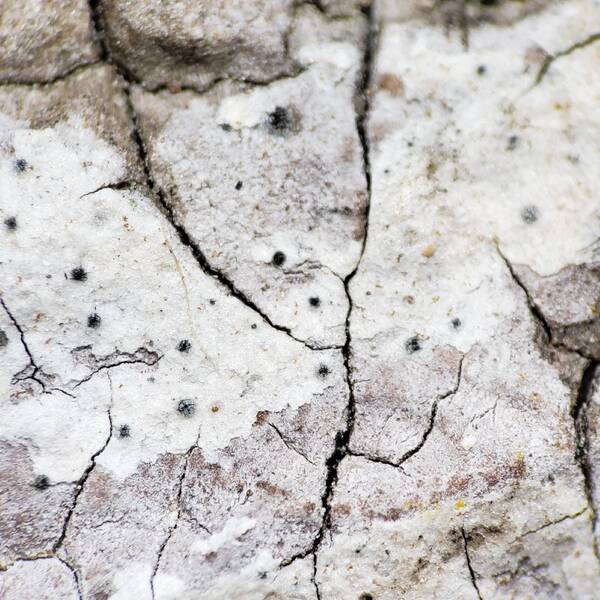Arthopyrenia fallaciosa (Stizenb. ex Arnold) Thiyagaraja, Ertz, Lücking, Coppins & K.D. Hyde
in Thiyagaraja & al., Mycosphere, 12 1: 1003, 2021. Basionym: Polyblastia fallaciosa Stizenb. ex Arnold - Flora: 604, 1863.
Synonyms: Julella fallaciosa (Arnold) R.C. Harris; Mycoglaena fallaciosa (Arnold) Vain.; Polyblastiopsis fallaciosa (Arnold) Zahlbr.
Distribution: N - Ven.
Description: Thallus crustose, not lichenized, continuous, endosubstratic, whitish, smooth, dull. Perithecia hemispherical or slightly elliptical, black, c. 0.4-1 mm across, not covered by thallus. Exciple thin, in upper half clypeus-like, bluish-black to violet-brown; involucrellum dark brown, mingled with bark cells; hamathecium of persistent pseudoparaphyses anastomosing above the asci, c. 1 μm thick, not inspersed with oil droplets; hymenial gel non-amyloid. Asci 8-spored, cylindrical to clavate, thick-walled, the inner wall thickened towards apices, with a shallow, broad ocular chamber. Ascospores at first 3-septate then submuriform to muriform, hyaline, long ellipsoid to clavate, (15-)17-21(-23) × (6-)7-10(-11) μm, with 4-6 transverse septa and 1-2 longitudinal septa. Pycnidia black. Conidia 3-septate, brown, 9-12 x 3-4 μm. Photobiont absent. Spot tests: all negative. Chemistry: without lichen substances. Note: a rare species growing on smooth bark, especially of Betula.
Growth form: Fungus
Substrata: bark
Reproductive strategy: mainly sexual
Pioneer species
Commonnes-rarity: (info)
Alpine belt: absent
Subalpine belt: absent
Oromediterranean belt: absent
Montane belt: very rare
Submediterranean belt: very rare
Padanian area: absent
Humid submediterranean belt: absent
Humid mediterranean belt: absent
Dry mediterranean belt: absent

Predictive model
Growth form: Fungus
Substrata: bark
Reproductive strategy: mainly sexual
Pioneer species
Commonnes-rarity: (info)
Alpine belt: absent
Subalpine belt: absent
Oromediterranean belt: absent
Montane belt: very rare
Submediterranean belt: very rare
Padanian area: absent
Humid submediterranean belt: absent
Humid mediterranean belt: absent
Dry mediterranean belt: absent

Predictive model
 Index Fungorum
Index Fungorum
 GBIF
GBIF


